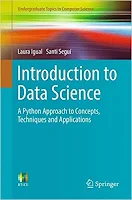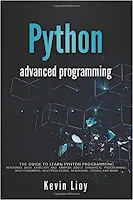Magnetics, Dielectrics, and Wave Propagation with MATLAB Codes 2nd Edition
Carmine Vittoria ... Publisher: CRC Press; 2nd edition (November, 2023) - Language: English.
Future microwave, wireless communication systems, computer chip designs, and sensor systems will require miniature fabrication processes in the order of nanometers or less as well as the fusion of various material technologies to produce composites consisting of many different materials. This requires distinctly multidisciplinary collaborations, implying that specialized approaches will not be able to address future world markets in communication, computer, and electronic miniaturized products.
Anticipating that many students lack specialized simultaneous training in magnetism and magnetics, as well as in other material technologies, Magnetics, Dielectrics, and Wave Propagation with MATLABR Codes avoids application-specific descriptions, opting for a general point of view of materials per se. Specifically, this book develops a general theory to show how a magnetic system of spins is coupled to acoustic motions, magnetoelectric systems, and superconductors. Phenomenological approaches are connected to atomic-scale formulations that reduce complex calculations to essential forms and address basic interactions at any scale of dimensionalities. With simple and clear coverage of everything from first principles to calculation tools, the book revisits fundamentals that govern magnetic, acoustic, superconducting, and magnetoelectric motions at the atomic and macroscopic scales, including superlattices. Constitutive equations in Maxwell’s equations are introduced via general free energy expressions which include magnetic parameters as well as acoustic, magnetoelectric, semiconductor, and superconducting parameters derived from first principles. More importantly, this book facilitates the derivation of these parameters, as the dimensionality of materials is reduced toward the microscopic scale, thus introducing new concepts. The deposition of ferrite films at the atomic scale complements the approach toward the understanding of the physics of miniaturized composites. Thus, a systematic formalism of deriving the permeability or the magnetoelectric coupling tensors from first principles, rather than from an ad hoc approach, bridges the gap between microscopic and macroscopic principles as applied to wave propagation and other applications.
Future microwave, wireless communication systems, computer chip designs, and sensor systems will require miniature fabrication processes in the order of nanometers or less as well as the fusion of various material technologies to produce composites consisting of many different materials. This requires distinctly multidisciplinary collaborations, implying that specialized approaches will not be able to address future world markets in communication, computer, and electronic miniaturized products.
Anticipating that many students lack specialized simultaneous training in magnetism and magnetics, as well as in other material technologies, Magnetics, Dielectrics, and Wave Propagation with MATLABR Codes avoids application-specific descriptions, opting for a general point of view of materials per se. Specifically, this book develops a general theory to show how a magnetic system of spins is coupled to acoustic motions, magnetoelectric systems, and superconductors. Phenomenological approaches are connected to atomic-scale formulations that reduce complex calculations to essential forms and address basic interactions at any scale of dimensionalities. With simple and clear coverage of everything from first principles to calculation tools, the book revisits fundamentals that govern magnetic, acoustic, superconducting, and magnetoelectric motions at the atomic and macroscopic scales, including superlattices. Constitutive equations in Maxwell’s equations are introduced via general free energy expressions which include magnetic parameters as well as acoustic, magnetoelectric, semiconductor, and superconducting parameters derived from first principles. More importantly, this book facilitates the derivation of these parameters, as the dimensionality of materials is reduced toward the microscopic scale, thus introducing new concepts. The deposition of ferrite films at the atomic scale complements the approach toward the understanding of the physics of miniaturized composites. Thus, a systematic formalism of deriving the permeability or the magnetoelectric coupling tensors from first principles, rather than from an ad hoc approach, bridges the gap between microscopic and macroscopic principles as applied to wave propagation and other applications.



















